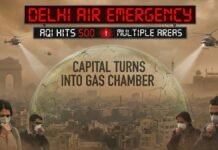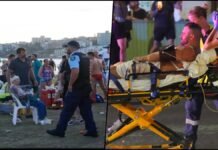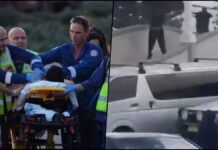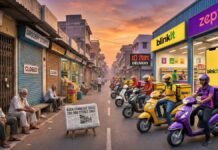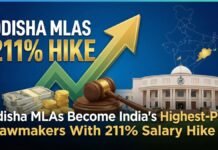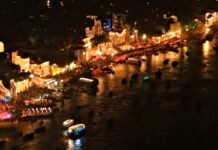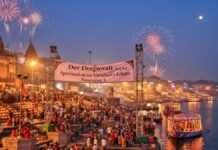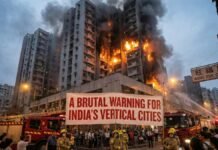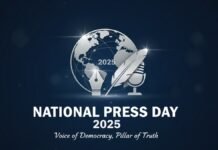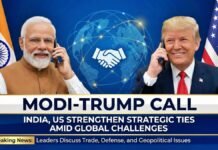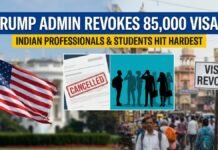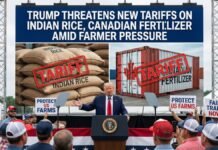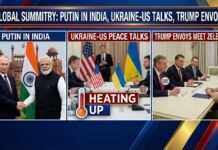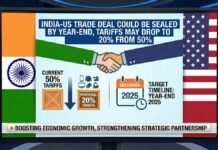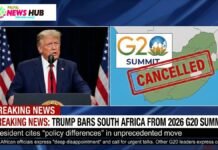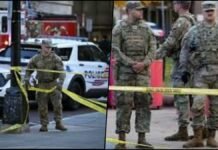
Key Points
- President Trump orders 2,000 California National Guard troops to Los Angeles following mass ICE raids and escalating protests.
- At least 44 people arrested in surprise immigration sweeps; protests erupt citywide, with clashes outside federal buildings and in Paramount.
- California Governor Gavin Newsom and LA Mayor Karen Bass condemn the deployment as “deliberately provocative” and likely to “escalate tensions.”
- Federal authorities cite “lawlessness” and attacks on ICE officers as justification for the move; some call for even tougher measures.
- Legal and political standoff intensifies, with National Guard under federal command and further protests expected.
Los Angeles: Los Angeles is at the center of a growing national controversy after President Donald Trump ordered the deployment of 2,000 California National Guard troops to the city in response to widespread protests following a series of aggressive immigration raids by U.S. Immigration and Customs Enforcement (ICE). The move, announced Saturday, comes amid fierce objections from California Governor Gavin Newsom and Los Angeles Mayor Karen Bass, who warn the deployment will only fuel further unrest.
What Sparked the Unrest?
The turmoil began Friday when ICE agents executed surprise raids at multiple locations across Los Angeles including the downtown Fashion District, Westlake, and South LA detaining at least 44 people for alleged immigration violations. Federal agents, supported by Homeland Security Investigations and other agencies, used flash-bang grenades and pepper spray to disperse crowds attempting to block their operations, especially outside a clothing wholesaler and a Home Depot.
Protests quickly spread, with hundreds rallying outside the federal building in downtown LA and later in the city of Paramount, a heavily Latino area. Demonstrators chanted slogans like “Free everyone” and “Stop deportations,” with some clashing with law enforcement and vandalizing property.
Federal Response: National Guard Deployed
Citing “growing chaos” and attacks on federal officers, the White House announced the deployment of National Guard troops under federal authority, bypassing the governor’s usual control. Press Secretary Karoline Leavitt described the protests as “violent mobs” and said the action was necessary to “halt lawlessness” and protect ICE operations. Trump’s memo authorizes the troops for up to 60 days, with the Defense Secretary empowered to extend or supplement the deployment with active-duty military if needed.
Federal officials, including ICE Acting Director Todd Lyons and Border Chief Tom Homan, defended the raids and the military response, arguing that Los Angeles officials had failed to maintain order and protect federal law enforcement.
State and Local Leaders Push Back
Governor Newsom blasted the federal takeover of the California National Guard as “purposefully inflammatory,” warning it would “only escalate tensions” and erode public trust. He emphasized that local authorities had not requested federal intervention and were already coordinating to maintain safety.
Mayor Karen Bass, whose city brands itself as a sanctuary for immigrants, condemned the ICE raids as “terror tactics” that “sow fear in our communities and disrupt basic safety principles”. She pledged support for immigrant rights organizations and denounced Trump’s move as a political spectacle.
Scenes on the Ground: Clashes, Arrests, and Community Outrage
Protests continued into Saturday, with riot police and Border Patrol in gas masks facing off against demonstrators in Paramount and downtown LA. Tear gas, flash-bangs, and mass arrests were reported, while some protesters set fires and blocked streets. Union leader David Huerta was detained and injured while documenting a raid, sparking further outrage among labor and immigrant groups.
Federal authorities reported that some protesters threw objects at officers and damaged property, while immigrant rights advocates accused ICE of indiscriminate detentions and traumatizing communities.
Legal and Political Implications
The deployment raises significant legal questions, as the president did not invoke the Insurrection Act but instead used federal statutes allowing National Guard mobilization in cases of rebellion or inability to enforce federal law. Experts note that, without the Insurrection Act, National Guard troops are limited to supportive roles and cannot directly engage in civilian law enforcement.
The standoff has deepened partisan divides, with Republican officials defending the crackdown and some Trump allies calling for even harsher measures including the possible use of active-duty Marines if violence continues.
President Trump’s deployment of 2,000 National Guard troops to Los Angeles marks a dramatic escalation in the federal crackdown on immigration and protest. The move follows mass ICE raids and citywide demonstrations, prompting sharp condemnation from California’s governor and LA’s mayor. As legal and political tensions mount, the city braces for further protests and an uncertain path forward.


